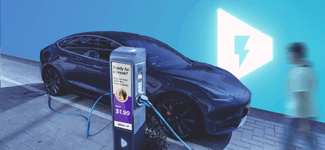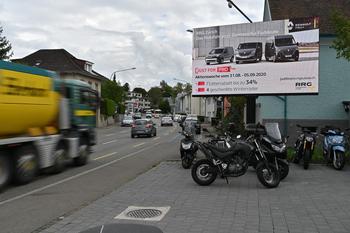Recently, we unveiled the optimization engine, an all-new feature for Broadsign Direct. It’s safe to say we’re excited about it and its potential to assist media owners looking to more efficiently manage campaigns, generate the most possible value from their network, and satisfy client needs.
To help you better understand what yield optimization does and why it could be game-changing for your DOOH business, we spoke to Broadsign’s Senior Director of Product, Seamus Hunn, to help demystify the tool, responding to some of the most frequently asked questions around the topic.
Scroll all the way down to find transcribed questions and answers from this discussion.
What is an optimization engine, anyway?
We’ll start with the basics. The optimization engine is the term we’ve given to this algorithm—it’s technology that handles content redistribution efficiently and intelligently. By reshuffling and optimizing your inventory, you’re able to accept more campaigns than ever before. Here’s Seamus offering a brief overview of the optimization engine:
What are the benefits of optimization beyond more revenue?
You might think that the optimization engine’s sole purpose is to drive revenue, but, as Seamus explains, there’s more to it than that. In the below clip, he discusses how flexibility is a major perk. Ultimately, the goal is to give media owners more opportunity to say “yes” to a higher volume of campaigns by stripping away any technological barriers and other limitations. Seamus expands on that point here:
What if I only sell plays per loop?
Seamus explains why even if you only sell plays per loop, you’ll still reap the benefits of the optimization engine. Loop-based selling often results in undesirable holes inyour scheduling, with no good way of rescheduling to accomodate new campaigns when you want to. In this clip, Seamus elaborates on how the feature kicks in to fill up unused space by shuffling around existing campaigns. Take a look.
What if I don’t have a high fill rate, but have plenty of available space?
Even though your network may not have a high fill rate, there are numerous reasons why the optimization engine may work in your favour. Sometimes, making decisions and moving around your inventory to accommodate incoming campaigns can get complicated—and it’s something that can lead to human error without the support of technology. The optimization engine automates decision-making to free up space sensibly. Here’s Seamus again on why anyone can benefit from the optimization engine.
What if I have a smaller network?
Remember, it’s not the size of your network that counts, but how you yield it. Even if you don’t have the largest number of screens in your network, you still want to ensure the ones you do have are making the most of your yield, because you’re operating on a more scarce resource. Watch the below clip to hear more from Seamus.
By the way, if you’re looking for helpful insights for managing and operating your DOOH network, check out our YouTube channel for more handy videos!
Video transcripts
What is an optimization engine?
So an optimization engine typically is a very special black box where magic happens.
But in all seriousness, it’s typically a piece of technology that can often use quite complicated mathematical solvers to address the problem of the balance between the supply of out-of-home inventory, particularly on digital, and demand.
The optimization engine should take away the guesswork that has traditionally been associated with trying to plan quite complex campaigns. It takes you on that path towards automation, whereby you can more readily and more quickly, get the best decisions in terms of how you allocate your inventory and address the ever-changing needs of our advertisers. What you ideally want to be able to do is create the best allocation of screens that delivers as many campaigns as possible for advertisers. That’s ultimately the goal that we’re trying to achieve for the media owners that we’re working with.
The best results for both advertiser and media owner will therefore look to create the strongest partnerships and ultimately the best growth in our medium, which is essentially what we’re trying to do at Broadsign.
What if I don’t have many screens?
So even though you don’t have many screens you still typically want to be able to make the most of what you have. So we look at things like yield management or yield optimization within that. And actually the smaller number of screens you have the more important that becomes because you have a much more scarce kind of resource.
Now, traditionally people have tended to use spreadsheets or excel to manage those distributions. And that has typically worked well particularly if you’re using things like plays per loop. However, with the level of complexity that’s increasing in that, that comes with digital out-of-home typically any screen can be delivering you know eight and a half thousand plus10-second ads every day. You don’t have to have many screens to make that level of complexity far more than any human can kind of compute. So what we’re looking to do with optimization and the optimization we’re building is to use quite complex mathematical solvers to make those best decisions.
So ultimately, what we’re looking at here is that manual is good and possibly very good, automated and optimized is best.
What if I have a high fill rate
Even though you might not have a very high fill rate, there’s an argument to be said that you could still benefit quite significantly from an optimization tool. That comes into play when you may need to move a campaign that exists to accommodate an incoming campaign. That can happen at any time depending on your level of penetration of your inventory. And having lots of campaigns further enhances the complexity of those kind of decisions and how you can make those kind of movements within your inventory.
It’s further complicated when you get into a concept called cascading. Cascading is where to accommodate an incoming campaign you need to move one but to move that one you need to move another and you can imagine that carries on and gets more complex as you go. That in itself is really difficult for a human to comprehend. We can generally go down to one, possibly two levels, but anything beyond that it gets really complex. That’s where optimization comes in, because what we’re looking to do with that is to automate those decisions to help free up space and ultimately deliver the best decision for that. The best combination of those parameters of campaigns to make the use of the space that you’ve got available.
Optimization provides us with the wherewithal to be able to make intelligent redistribution decisions of existing campaigns to be able to accommodate those new ones and essentially deliver the best permutation of all.
Do I need an optimization engine if I only sell plays per loop?
So if I only tend to sell plays per loop, those types of campaigns can often lead to holes within the inventory. You could think of an example of being a big piece of swiss cheese and there tend to be holes in the places you don’t really want them to be. That can be driven particularly when customers demands are changing such that they might want to have day part targeting or potentially combining day part targeting with a smaller selection of screens.
If you had several hundred screens in your portfolio a customer has come along and said they just want a small section of those and only a certain type of day. Now, traditionally, that creates some headaches for media owners and can generally lead to them having to say no to customers particularly because they don’t want to leave these big unsold pieces of inventory available to fix around them. Especially if you’ve tended to be doing a big network on a place plays per loop basis.
Optimization helps with that because it can help plug those holes by reshuffling the inventory wherever possible and possibly even being able to be combined with different types of mechanisms like dynamic screen selection. Such that you can create a larger group of screens that a customer is happy to use and reallocate your plays per loop within those screens to help free up space for other campaigns to come in. An example being that you might have identified 60 screens that a customer is happy to use, you allocate the campaign to 50 that leaves you 10 that you could use if you wanted to swap out some of those screens to make space for other campaigns.
What are the benefits of optimization?
So ultimately it’s about happy customers. The happier a customer is, the stronger the relationship that they will build with a media owner, and that helps media owners to evolve and build their business and make them successful. Ultimately resulting, you would hope, in more revenue but that’s not the main agenda behind this.
Really what we’re looking at is the ability to provide our media owners with an opportunity to say yes more often to their customers and their ever more complex requirements that their campaigns are delivering. So ultimately, what we’re trying to do is remove some of those technological barriers that were in place in the early days of digital out-of-home. And have potentially, kind of, limited the amount of growth that we will be able to see.
Typically you expect more revenue to be coming in from, let’s say, online customers. People who have experience working in and spending their media in online. They tend to enjoy much more flexibility in the ways that they can buy, and the ways that they can deliver those campaigns. Plays, impacts, that kind of stuff. Traditionally for out-of-home it was around the one in six or frequency because those were much easier for media owners to manage. Much easier for customers to understand in terms of the delivery, the scheduling, and the reporting that came against those campaigns. But we’re looking to take that a step further now, so we can provide our media owners with the abilities to blend together all types of different buys.
So frequency, impacts, plays, share of voice, to ultimately offer their customers the choice about how they want to plan and execute their campaigns.






